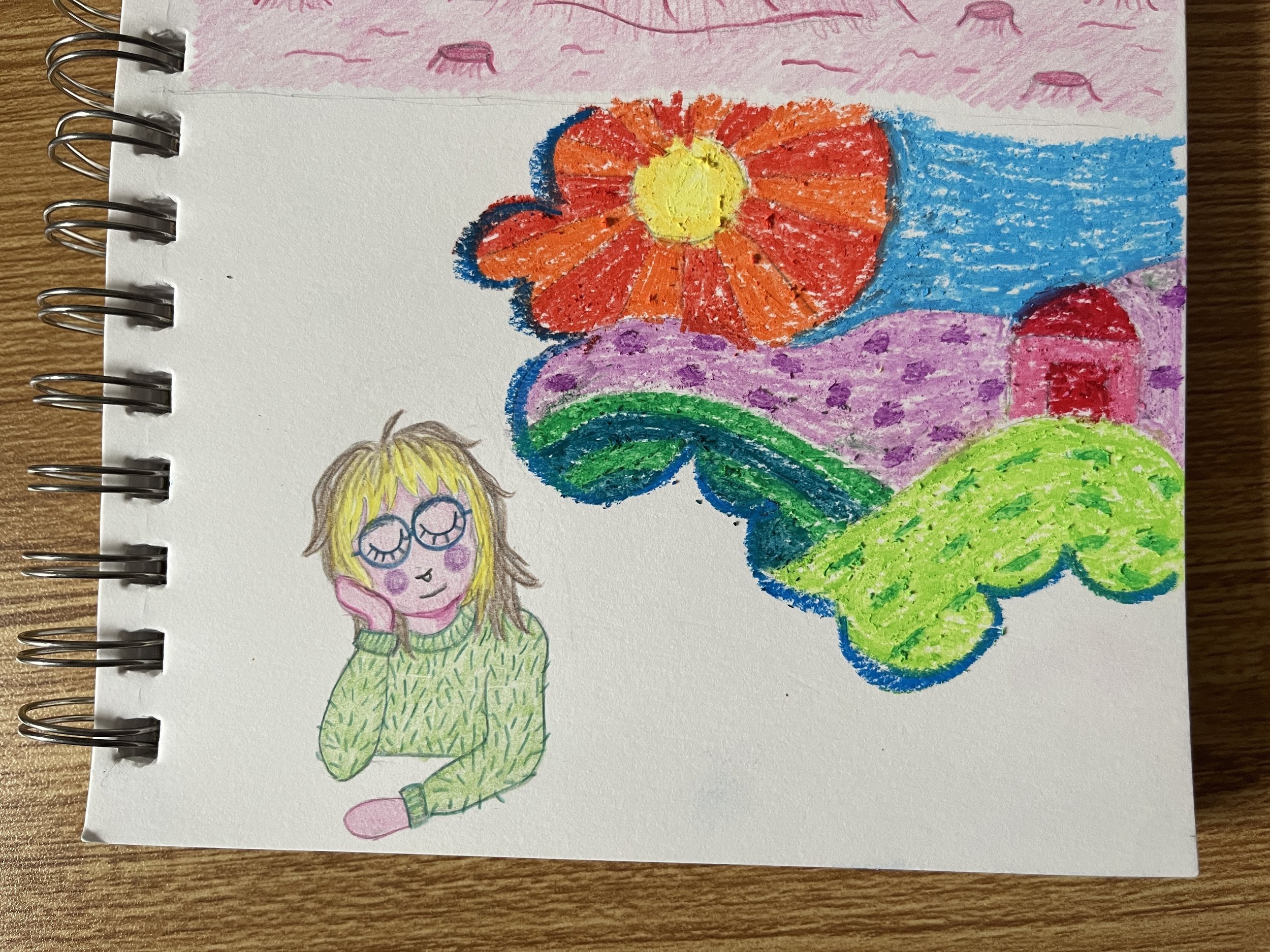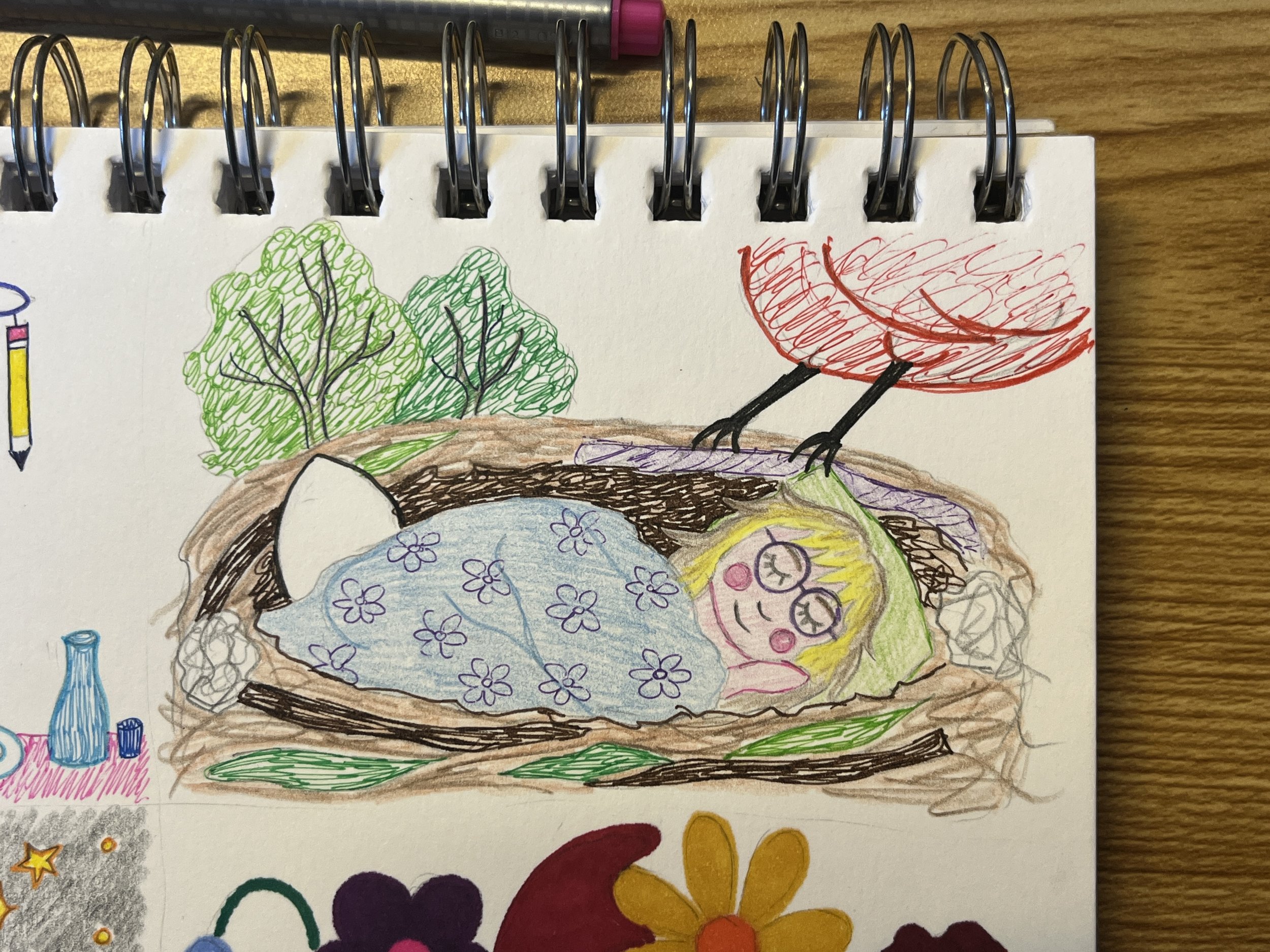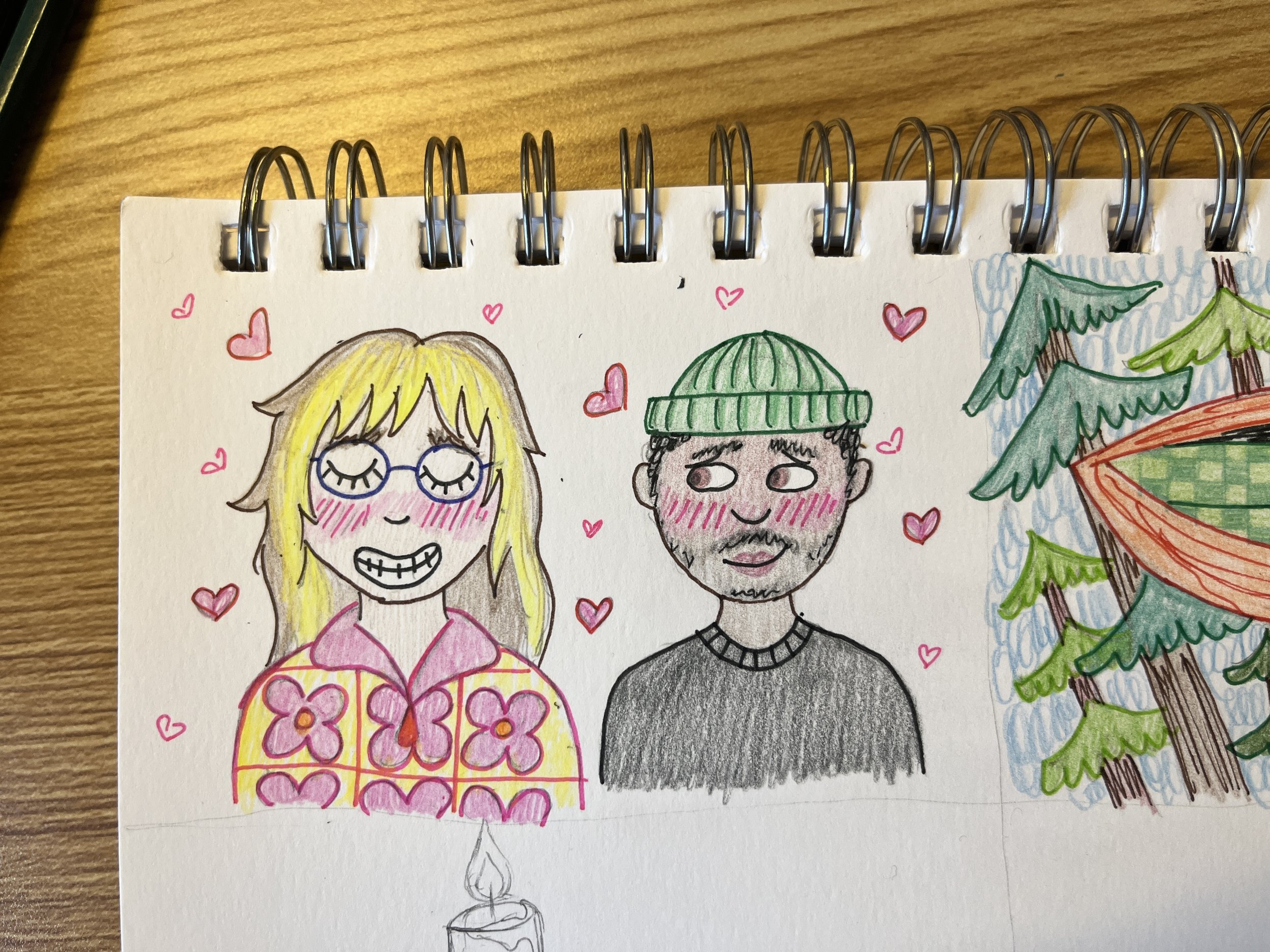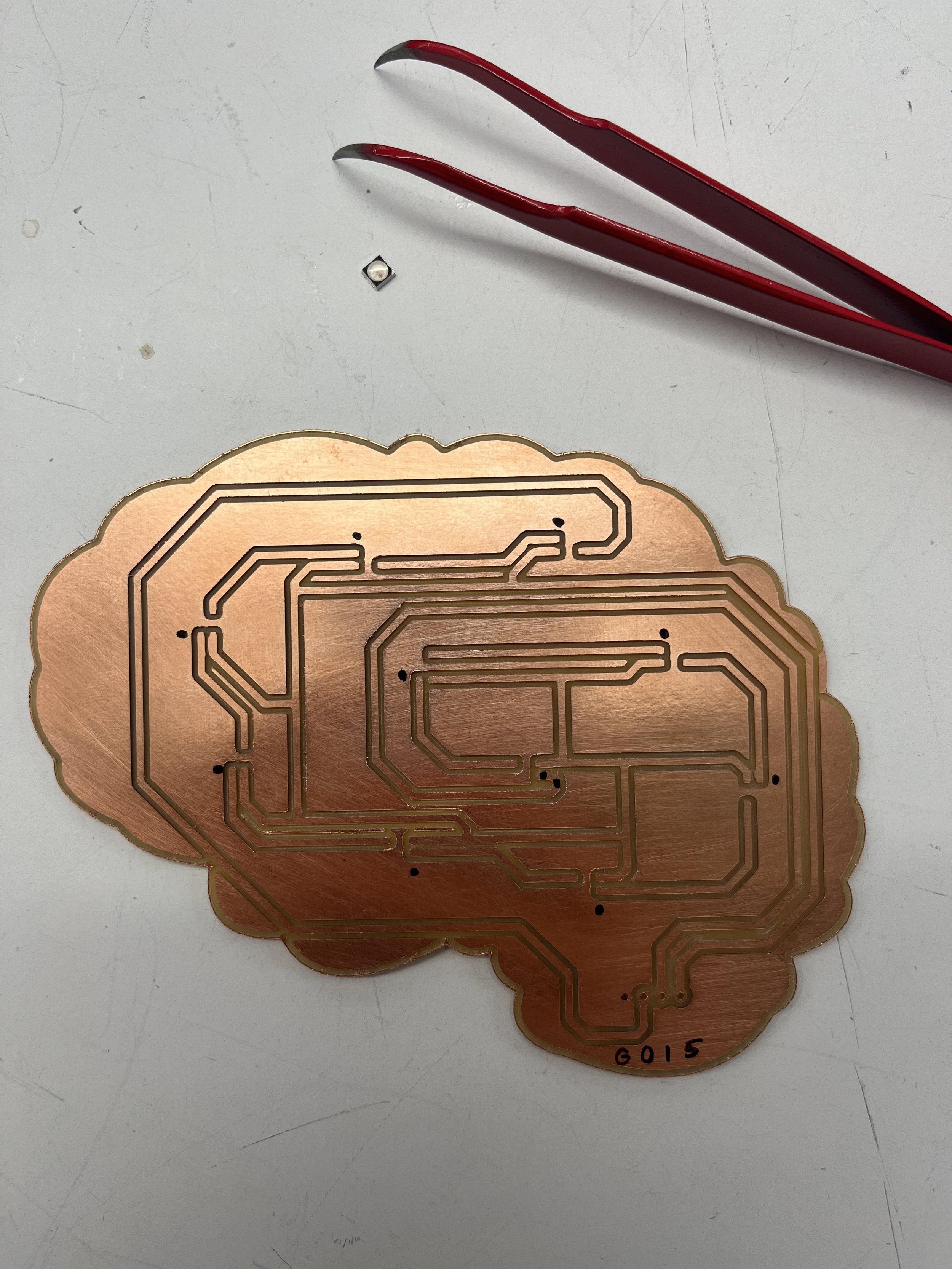Research - Embodiment / Bodies everywhere!
The Wisdom of Your Body, Hillary L McBride, PhD
“The body is not a thing we have, but an experience we are” - Theresa Silow
How do I experience my body?
If you were in fact your hand, how would you reveal yourself as a hand? — not sure what this means any more in hindsight… wish I had a page number for this
We forget all about bodies until we face pain, aging, illness, trauma, incarceration, or impending death
People are reduced to body-objects not empowered as body-subjects
We have forgotten ourselves as bodies to survive the pain or to be compliant
Dissociation!
Embodiment helps us be fully present and connected with ourselves and with those around us
Trauma occurs when something negative and unexpected happens, and it leaves us feeling confused, overwhelmed, and powerless (59)
Depression is not a feeling but a nervous system state we move into after having been overwhelmed or mobilized for too long. Same thing for burnout (63)
We complete the stress cycle when we release our trauma response mechanisms by moving the stress-related energy out through our body (65)
Interoception = ability to sense what is happening in your body and to know yourself from the inside out
Culture has ideals about bodies and they are communicated through three primary sources of influence: parents, media, and peers (85)
Reinforced idea that our appearance is connected to our social belonging (87)
Objectification as the experience of being female in a patriarchal culture that sexually objectifies the female body.
Self-objectify = to internalize the observers perspective as a primary way to view themselves (90)
Body neutrality = appearance acceptance or appearance neutrality
How we value and honor our own bodies impacts how we value and honor the bodies of others (96)
There is goodness in our own body
Interoception is essential for creating the experience of balance and homeostasis, regulating emotion, having a sense of body ownership, and experiencing continuity as a person over time (98)
Media
Trauma schism = mentally remove yourself from your body - Big Mouth, season 7 episode 9
“The body can’t live without the mind” - Morpheus, the Matrix
My own thoughts
Want to reconnect and remember my body
Shut down connection to the body as a trauma response, it’s just easier
Physically practicing my physical art practice
Me: I don’t want to be perceived, I don’t want to attract any extra attention, be invisible, take up as little space as possible
What it feels like, or what I visualize, in a dissociative episode. These happen when I have heightened anxiety or stress
I also tried completing Inktober last month. I didn’t succeed with creating 31 drawings in 31 days but I did represent myself a few other ways. I’m planning on still completing the rest of the prompts for Inktober, on my own timeline, but it might be helpful to my thesis if I keep on approaching these prompts as self-portraits!
8 Dream
12 Nest
17 Blush
18 Snooze
Eyes always closed… why am I always sleeping?!
Office Hours
Blair Simmons
I want to know about your portraits
Devices are an extension of self
Release of data
Should look into the history of portraiture
Who are the people who historically could afford to get portraits made? Can we reclaim this process?
Exploring a self-portrait could be an opportunity to be known and held in memory. Is there a desire to share?
Lean in to your instincts
Do the work to decide why. What’s the justification for what you are doing, choices you make?
Why is this all about you? Why is this literal? Why feminine?
Note when things are frustrating and try to disentangle, note when things are joyful
This thesis is an exploration of embodied/instinctual making
Is this project a critique? Inserting the self (or the human) into logical, technical thinking/design
The self wasn’t meant to be rational, emotions were meant to be taken out of the scientific process
What do we lose when we attempt to take out the human bias when designing tech?
Personal connection to the work
Sharon de la Cruz
Find more examples of self-portraiture. Why would you make it?
Dabble in the range of literal to abstract
I’m in practice with my body, body is a vehicle to create, PHYSICAL art practice
I want to more consciously understand my body and its relationship to my making process
How are you making differently now?
“Don’t think, just do” has been my motto for the last few years, trying to put words to the gut feelings
Give yourself space to defend and be secure in what you made, reflection on the message
How will you make people (viewers) sit and be in the story?
Gabe Barcia-Colombo
Brain looks cool but doesn’t say much
I should be writing everyday… about anything
Brain storm a list of body interfaces, inputs and outputs
Some Jan Svankmajer reference…
Prototype
Ok, so if we can remember, I ended last week with two PCB designs and one milled PCB. I started by milling my second PCB, just a different view of the brain with different neuron configuration.
I got all my parts in from Adafruit so I was ready for assembly. I made some markings on the PCB to indicate the orientation of the LEDs. Then, glopped some solder paste on all the pads. This was kinda hard because it’s hard to control the paste in the tube. I had to use my favorite, super sharp tweezers to clean up and push around the paste. Then I placed all my LEDs and used the hot air gun and a coffee cup warmer to reflow the solder. Honestly, assembly worked a lot better that I thought it would!
Pin indicator markings
Solder paste
Completed prototype
So I plugged this thing into my Arduino, powered it with my computer, and I got this error: “Power surge on USB port”… FUCKING SHITTY LED footprint!!!!!! Turns out the footprint Adafruit provided for their NeoPixel is not drawn to match the physical footprint of the part, so the pads short to ground since this self-milled prototype has conductive copper all along the top surface. So I needed to redraw the LED footprint.
Here’s all the dimensional information on the part datasheet… not enough measurements to draw an accurate footprint as far as I can tell.
I took a picture of the pads on the bottom side of the LED and brought it into Illustrator. I tried keeping the image to scale with the part and measured the size of the pads. Then I followed this trusty SparkFun guide on how to make SMD parts in Eagle. It took me longer than I would like to admit but my improved footprint is below. I revved my Eagle files with the new footprint.
Here’s a comparison of my new footprint (above) vs. the Adafruit footprint (below)
This is v02 design of my brain proto
With the update board files, I was ready to start fabricating again. I followed the same steps of milling, marking, solder paste, placing LEDs, and reflowing to create my assembled prototype. I thoroughly checked this board to make sure it wasn’t shorting across power and ground before powering it this time.
And voila! It’s alive!
Honestly, I feels proud that I could revisit my PCB drawing skills seeing they weren’t all lost to time! Also, I think I’m a pro on the Bantam now, milling my own boards. Super bad-ass!
Next Steps
Redesign the other brain view in Eagle with new footprint
Mill, assemble, test that proto
Try out some other LED animations?
Need to order presence sensor
Do Fusion 360 Tutorial
Find (or model) a brain
Try out the slicer and make a cardboard prototype
Continue working on Washing Machine
Try out new motor driver
Do I need to order a stronger motor and power supply?
Resources
My GitHub repo with Eagle design files and code
https://learn.sparkfun.com/tutorials/designing-pcbs-smd-footprints
https://learn.sparkfun.com/tutorials/making-custom-footprints-in-eagle/all
















